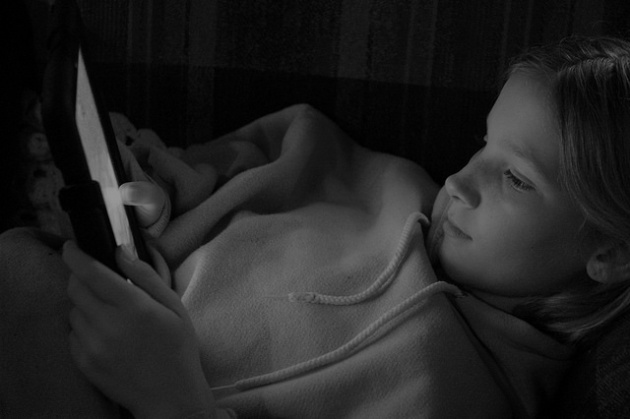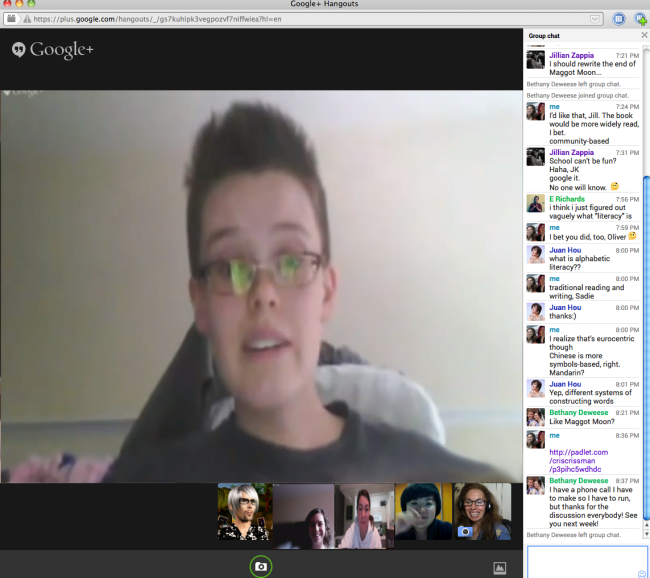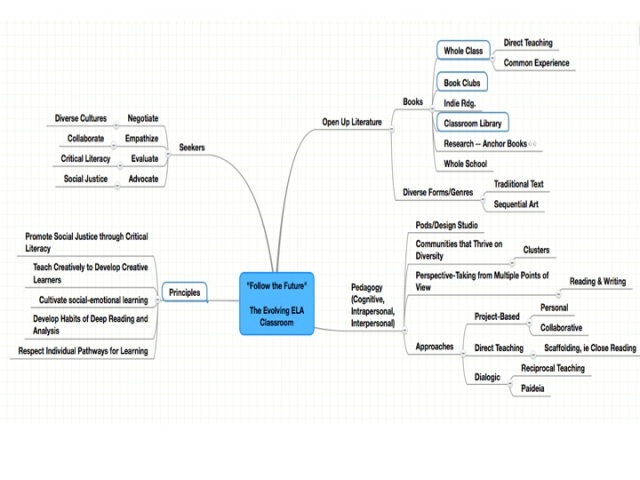photo by Cris Crissman
“Kids [here] have the right to read. They have the right to think and imagine. To see their own world in books. To see other worlds in books.” — Rainbow Rowell
Kids also have a right to create! And, perhaps, in the creating they can learn to create the world they can imagine.
Designing our final project — the interdisciplinary Collaborative Critical Inquiry for students — gives us the opportunity to pull together all that we’ve been exploring this summer session. We began with our first compelling inquiry question: “What might the literacies-based teaching of literature for young adults look like?” which unpacked included “what is literacy?” and “what is literature?” And then we layered on “how to create an inclusive classroom” and “how should we use technology in the service of learning the literacies required for the 21st century?
Many of the “more knowledgeable others” we read, including Gordon Wells, literacy researcher; Shelley Wright, English teacher; Matt Champagne, elementary teacher, write of how English language arts classrooms are best focused on inquiry learning. We don’t teach books anymore — we learn with books.
For this evolving Collaborative Critical Inquiry model, we have chosen a theme, belonging, and Sadie, our CCI point, has suggested an inquiry question and scaffolding questions to jumpstart our inquiry. I’ve also recommended Brene Brown’s TED Talk as a way to consider the depth and complexity of what belonging means.
Once we have our questions finalized then we need to plan our inquiry that will include an engaging introduction using Reading Response, the During Reading — reading and inquiry of the books in the text set that we each contribute to, and then an activity that gives students a chance to pull it all together. The project concludes with each student engaging in personal reflection.
For During Reading, the reader response is usually socially mediated. We have an ongoing inquiry into book clubs of all types: independent reading for a purpose and then sharing with the group; Book clubs where members select books on an agreed upon theme/topic, genre/art form and then share, or a traditional book club where everyone reads the same book. Literature circles could also be used. These are usually more structured or more highly scaffolded than book clubs.
Two other effective strategies that work well for the During stage of the inquiry are Reciprocal Teaching (the Reading Apprenticeship version) and the Paideia Seminar. Reciprocal Teaching sounds much like the approach our teen guest Laia described with student teams reading a book together chapter by chapter and engaging in discussion. With Reciprocal Teaching, the students practice the reading processes of predicting, questioning, clarifying, and summarizing. They work toward competence and independence.
The other group strategy could be a Paideia Seminar which has a Pre-or Introductory activity, the During reading when the students engage in reading, and the Post reading when they participate in a Paideia (or Socratic-like seminar). See Week 4 Archive for video overviews . . .
The best kind of Post- or culminating activity for a Collaborative Critical Inquiry is for students to imagine what they could do to with what they learn through their inquiry to make a difference. Shelley Wright describes a social media campaign her students implemented to fight against human trafficking. The Empty Bowls Projects was created by two art teachers and has students making clay bowls to sell to feed the hungry in their communities after an interdisciplinary inquiry into global hunger and food insecurity.
That’s one of the digital advantages for inquiry in today’s classroom — that it need not be confined, in fact, must not be confined to the classroom walls if students and teachers are to learn with with autonomy and agency.
So let this literacies-based teaching of young adult literature begin . . .











